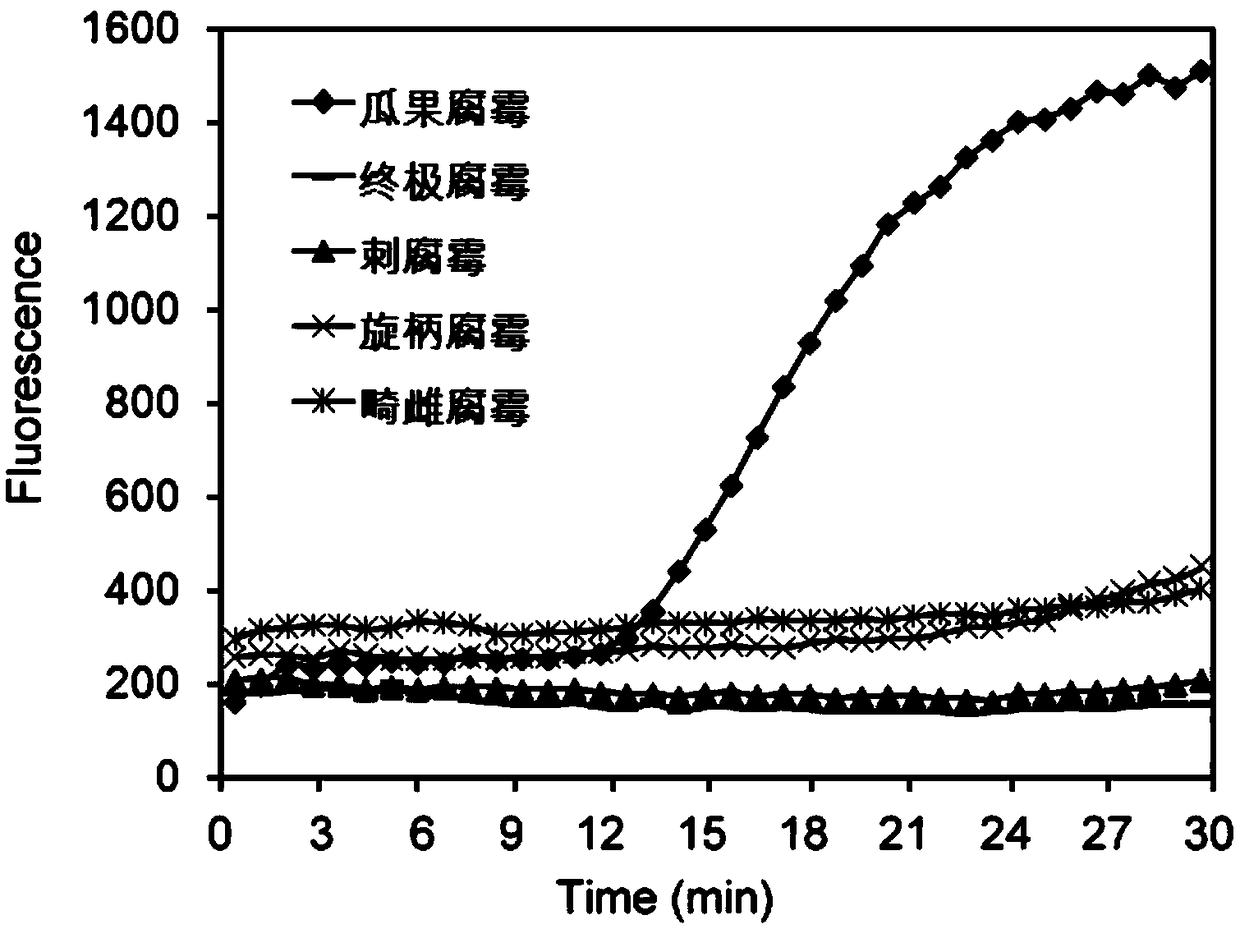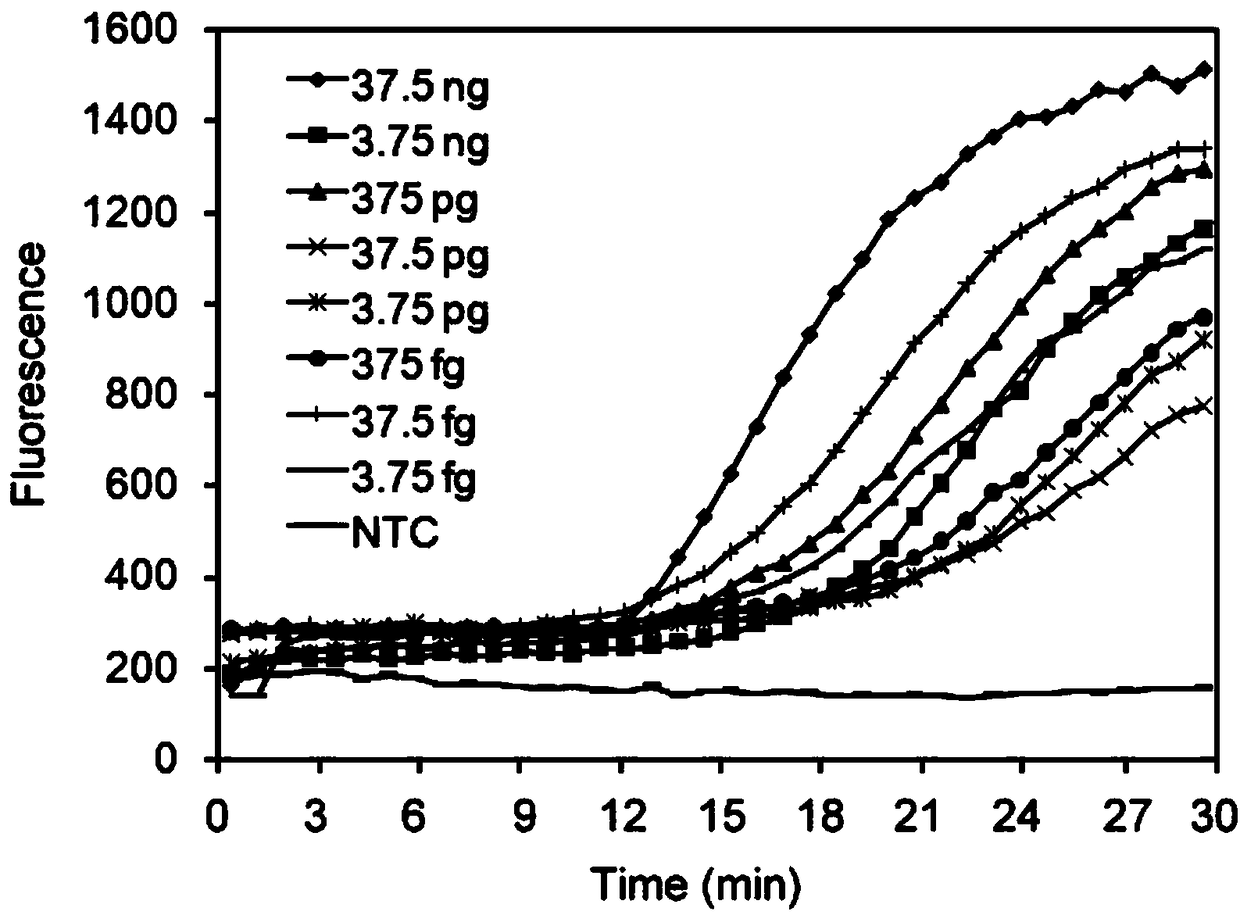Primer, probe and kit for detecting soybean damping-off disease based on recombinase polymerase amplification method
A recombinase polymerase and kit technology, applied in the biological field, can solve the problems of long cycle, poor specificity and low sensitivity of detection methods, and achieve the effects of high accuracy, convenient operation and simple requirements.
- Summary
- Abstract
- Description
- Claims
- Application Information
AI Technical Summary
Problems solved by technology
Method used
Image
Examples
Embodiment 1
[0027] Embodiment 1: Utilize RPA method to detect Pythium melon and fruit
[0028] RPA primers and probes for detecting Pythium melon and fruit: the forward primer F-primer is shown in SEQ ID NO.1, the reverse internal primer R-primer is shown in SEQ ID NO.2, and the probe Probe is shown in SEQ ID NO.1 Shown in ID NO.3.
[0029] The total volume of the RPA kit for detecting Pythium melon and fruit is 50 μL, the concentration of each reagent is: 29.5 μL RehydrationBuffer, 8.2 μL DEPC-treated water, and the final concentration of forward primer and reverse primer is 420nmol L -1 , the final concentration of the probe was 120 nmol L -1 , the final concentration of MgAC was 14mmol L -1 , 5 μL DNA template.
[0030] RPA detection method: extract the DNA of the microorganism to be tested, take 5 μL of the DNA solution as a reaction template, add 45 μL of the detection solution in the kit for RPA, and the RPA reaction procedure is: 39 ° C reaction amplification for 30 minutes, and...
Embodiment 2
[0032] Embodiment 2: the sensitivity test of Pythium melon and fruit RPA reaction
[0033]In order to determine the sensitivity of the RPA detection method, measure the concentration of the extracted Pythium melon and fruit DNA with a spectrophotometer and perform a 10-fold dilution. Set the DNA concentration range to 37.5ng-3.75fg, and take the diluted DNA of each concentration to dilute 5 μL of the solution was used as a template, and 45 μL of the kit solution was added to carry out the RPA reaction. The reaction procedure was: reaction and amplification at 39°C for 30 minutes. The results show that: as the RPA reaction continues, the fluorescence values of different DNA concentrations are increasing with time, and the fluorescence intensity decreases with the decrease of the amount of DNA template, indicating that when the DNA concentration is 3.75fg, it is enough detected by the RPA method ( figure 2 ).
PUM
 Login to View More
Login to View More Abstract
Description
Claims
Application Information
 Login to View More
Login to View More - R&D
- Intellectual Property
- Life Sciences
- Materials
- Tech Scout
- Unparalleled Data Quality
- Higher Quality Content
- 60% Fewer Hallucinations
Browse by: Latest US Patents, China's latest patents, Technical Efficacy Thesaurus, Application Domain, Technology Topic, Popular Technical Reports.
© 2025 PatSnap. All rights reserved.Legal|Privacy policy|Modern Slavery Act Transparency Statement|Sitemap|About US| Contact US: help@patsnap.com


